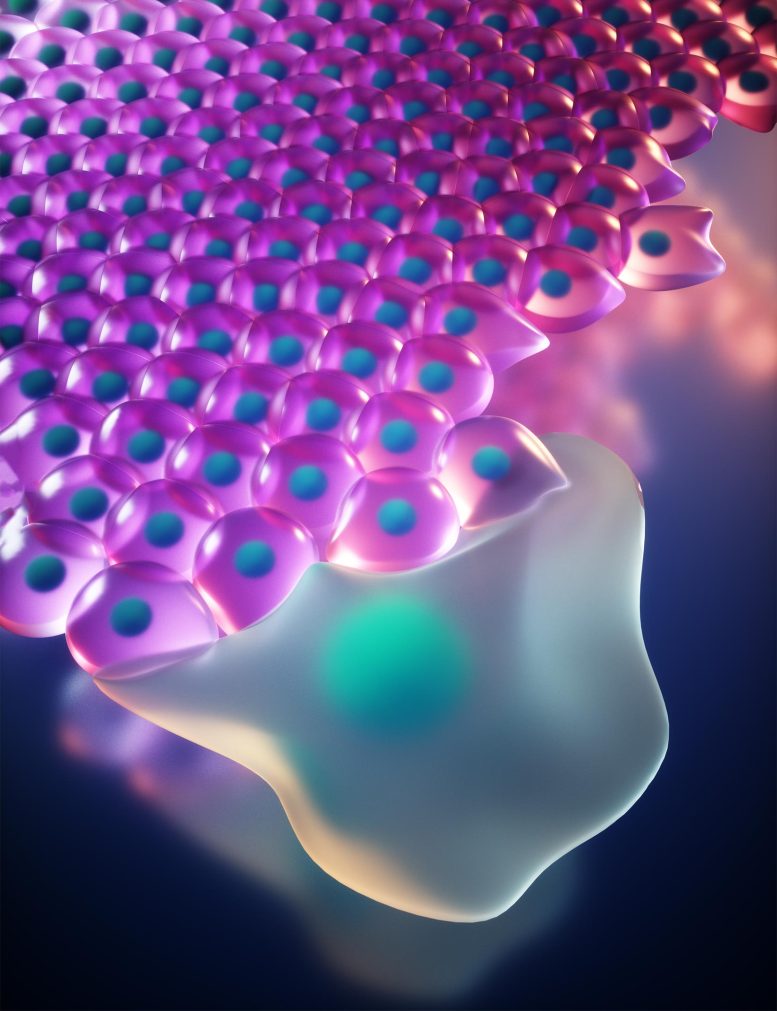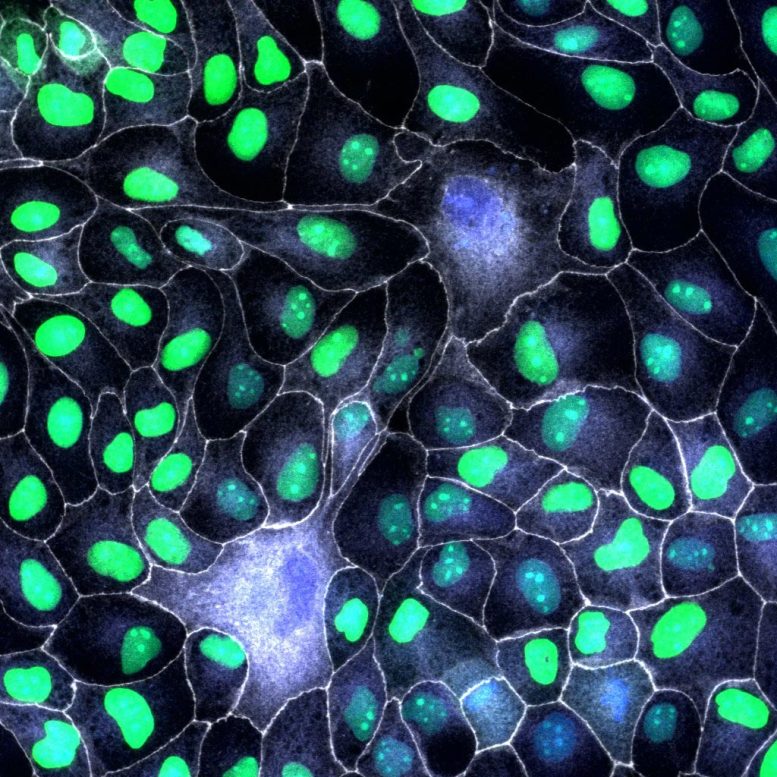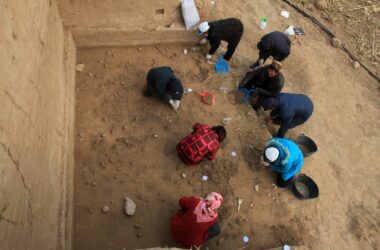
Représentation artistique d’une cellule leader dirigeant la migration de ses voisines (followers) pour réparer une blessure. Crédit : Studio Ella Marushenko
De nouvelles recherches menées par l’University of Bristol has found the protein p53 plays a key role in epithelial migration and tissue repair. The findings could improve our understanding of the processes used by cells to repair tissues, and be used to identify interventions that could accelerate and improve wound repair.
Epithelial tissues are the linings that protect the body’s external skin and internal cavities, and their ability to repair themself is important. It is known that wounded epithelia repair themself thanks to the ability of the remaining cells to start migrating, collectively, to seal the breach. Specialized migratory cells called leader cells arise from damaged epithelia, promoting epithelial migration. However, it’s unclear what molecules and signals in epithelial cells make them become migratory leaders and how some wounded cells develop leader behavior whilst some do not.
The study, funded by CRUK and Wellcome Trust and published in Science on February 11, 2022, found that, when epithelial cells are damaged, the damage activates a molecular program that turns cells into migratory leader cells so that the breach can be repaired quickly. The same molecular program also makes sure that these highly migratory cells are removed when the breach is closed, so that the tissue restores its normal epithelial tissue structure.

Once the collective migration of cells has closed the breach, the damaged leader cells need to be cleared from the tissue. When the leaders (blue nuclei) cannot be eliminated by their neighbours (green nuclei) their permanence in the epithelium compromises its regular architecture. Credit: University of Bristol
Using a simplified model of a wound, epithelial sheets that were scratched in vitro to injure the epithelial monolayer, the researchers identified the molecular signal that makes leader cells emerge.
The study found that, following injury, cells at the border of the epithelial gap elevate p53 and p21, suggesting that the injury triggers the migratory program. Once the breach was repaired, leader cells were eliminated from the population by their healthy epithelial neighbors. The cells damaged by the wound were able to cause wound closure, but are then sacrificed to maintain a functional tissue with normal epithelial morphology.
Vidéo Time-lapse d’une plaie modèle in vitro. Une cellule leader émergeant de la population entraîne la migration collective des cellules suiveuses dans l’espace pour sceller la brèche. Une fois le tissu réparé, la cellule leader est entourée par ses voisines et éliminée. Crédit : Université de Bristol
Eugenia Piddini, professeur de biologie cellulaire et chercheur principal du Wellcome Trust à l’école de médecine cellulaire et moléculaire (CMM) de l’université de Bristol et auteur principal de ces travaux, a déclaré : “Nos résultats améliorent notre compréhension des mécanismes utilisés par les cellules pour réparer les tissus, et pourraient être utilisés pour développer des systèmes qui accélèrent la guérison des blessures.
“p53 joue deux rôles critiques dans la réparation épithéliale. Il déclenche la fermeture épithéliale dirigée par les leaders et une fois que l’épithélium a été réparé, p53 induit la clairance des cellules leaders.”
Le Dr Giulia Pilia, associée de recherche en CMM à l’Université de Bristol et co-auteur principal, ajoute : “La migration collective est importante dans d’autres domaines, par exemple dans le cancer, où des groupes de cellules se déplacent ensemble à partir de la tumeur primaire pour créer des métastases. Il serait important de savoir si les mêmes protéines que nous avons identifiées dans le modèle de la plaie sont en jeu dans cette situation, afin de pouvoir modifier les traitements thérapeutiques actuels.”
Les prochaines étapes de la recherche consisteront à vérifier si les mécanismes qui ont été trouvés dans le modèle de la plaie sont en jeu. in vitro épithélium s’appliquent également in vivo. Si c’est le cas, l’équipe de recherche aimerait tester si elle peut induire sélectivement et en toute sécurité des leaders in vivoafin de favoriser la migration et la réparation des tissus. Ces nouvelles connaissances sur le fonctionnement des leaders pourraient également être utilisées pour développer de nouvelles approches thérapeutiques permettant de bloquer la migration indésirable des cellules métastatiques.
Référence : “p53 directs leader cell behavior, migration, and clearance during epithelial repair” par Kasia Kozyrska, Giulia Pilia, Medhavi Vishwakarma, Laura Wagstaff, Maja Goschorska, Silvia Cirillo, Saad Mohamad, Kelli Gallacher, Rafael E. Carazo Salas et Eugenia Piddini, 11 février 2022, Science.
DOI : 10.1126/science.abl8876



